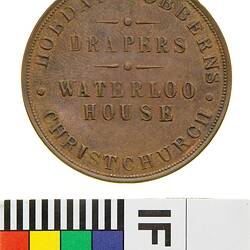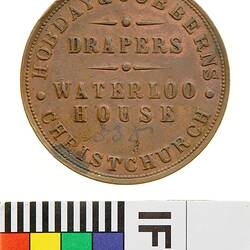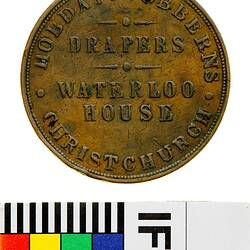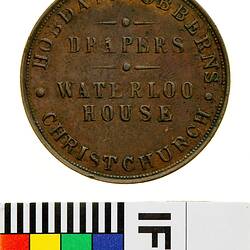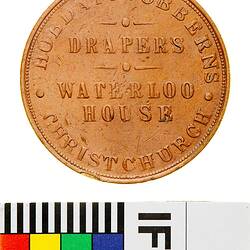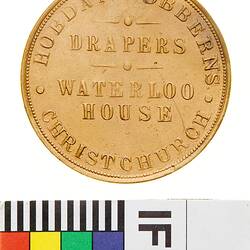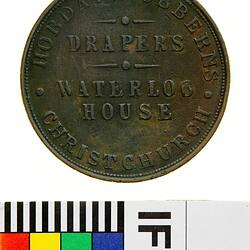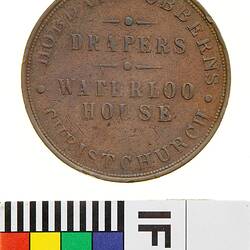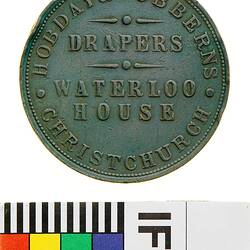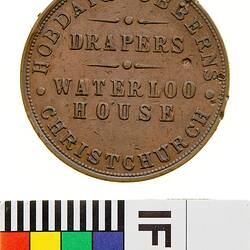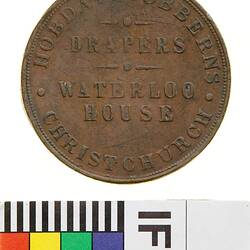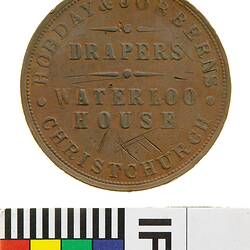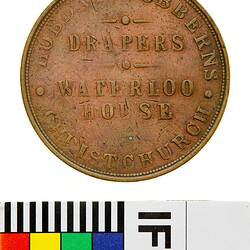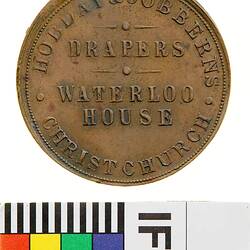The date of this firm's establishment, and the identities of its principals are unknown. The firm is known to have existed from some time after 1873, when Thomas Stokes took Mr Martin as a partner to form the Stokes and Martin mint, the company that struck Hobday and Jobberns' tokens.
The drapery business was located in Cashel Street, Christchurch and 'was well known in the early days.' (They Made their Own Money, p.42.)
The bulk of the details given in They Made their Own Money concern the firm's fiery end. Just before two o'clock in the afternoon of October 1888, a fire started in a pressing room upstairs in Hobday & Jobberns' building. When first noticed it could have been stopped by a bucket of water if there had been a bucket handy, but it got out of hand and swept through the brick two-storey building on the corner and the three-storey building next to it on the corner of Colombo Street. When the brigade arrived it gave its immediate attention to saving the adjoining buildings and the A.1. Hotel on the opposite side of Colombo Street.'These were damaged by water and smoke, but on all sides it was agreed that the brigade did a great job by confining the fire to Hobday's block. Hobday and Co. had about sixty hands, but half of them were away at lunch, and the others got out without difficulty. The name of the firm had evidently been altered since the issue of the tokens.'
'Hobday's building was rebuilt in 1889 and was taken over by Lonargan and Lonargan and McClea.'
The business issued two varieties of penny tokens, circa 1873. The tokens were struck for them by Martin & Stokes of Melbourne.
References:
The Canterbury Branch of the Royal Numismatic Society of New Zealand (1950). They Made their Own Money: The Story of Early Canterbury Traders & their Tokens, pp.42-46.
More Information
-
Keywords
-
Localities
-
Authors
-
Article types

